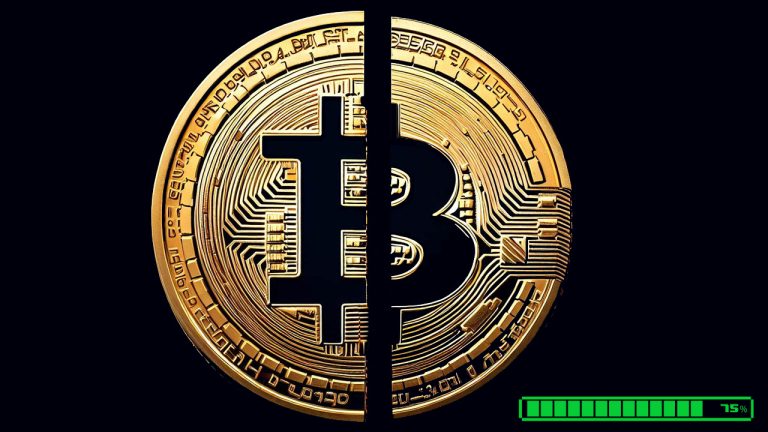
At 11:06 a.m. Eastern Time (ET) on April 29, 2023, at block height 787,500, the number of blocks left to discover until the next Bitcoin blockchain halving is now fewer than 52,500 blocks. This means the network has progressed 75% through the 210,000-block halving cycle, which will ultimately result in a reduction of the block reward from 6.25 bitcoins per block to 3.125 bitcoins per block.
Bitcoin Halving Countdown: Fewer Than 52,500 Blocks Left to Discover
On Saturday morning (ET), the Bitcoin network progressed 75% of the way toward the next block reward halving, with fewer than 52,500 blocks left to discover until the event occurs. This milestone marks another step in the ongoing evolution of the Bitcoin network as it progresses toward its eventual maximum supply of 21 million bitcoins. The Bitcoin blockchain halves its block reward every 210,000 blocks, which occurs roughly every four years.
▓▓▓▓▓▓▓▓▓▓▓▓░░░ 75%
365 days and 52503 blocks left
$29385 per #bitcoin
— Progress Until Next Halving (@btc_halving) April 29, 2023
Bitcoin has recorded three halvings so far, with the first taking place on Nov. 28, 2012. Prior to that date, Bitcoin miners received 50 BTC per block discovered, and after the first halving, it was cut to 25 BTC. The second halving occurred on July 9, 2016, cutting the block subsidy down to 12.5 BTC, and the third took place on May 11, 2020, slashing the reward down to the current 6.25 bitcoins per block.
We are 75% through this Halving cycle as of block 787,500!#Bitcoin pic.twitter.com/qtGq7L5TgW
— Clark Moody (@clarkmoody) April 29, 2023
The 75% progress mark happened at block height 787,500, and at the time of writing, there are 52,465 blocks left to discover until the halving. Bitcoin’s halving is expected to occur on or around April 22, 2024, while other estimates vary by a few days. With 6.25 bitcoins per block today, Bitcoin’s inflation rate per year is 1.71%, but after the next halving, it is expected to be 0.84%. Statistics show that roughly 900 bitcoins are generated per day, and at the current BTC exchange rate, miners accrue roughly $26,335,800 per day.
The next proof-of-work (PoW) blockchain to experience a reward cut will be the Dash network, but the fraction removed is a reduction and not an official halving. The Dash reward reduction will occur in less than 53 days from now. Litecoin (LTC), on the other hand, will experience a reward halving in less than 95 days from now. The LTC network will see its reward halved from 12.5 LTC to 6.25 LTC on or around Aug. 3, 2023.
What do you think the impact of the Bitcoin halving will be on the overall cryptocurrency market? Share your thoughts in the comments section below.
from Bitcoin News https://ift.tt/FZX1zKr
Comments
Post a Comment